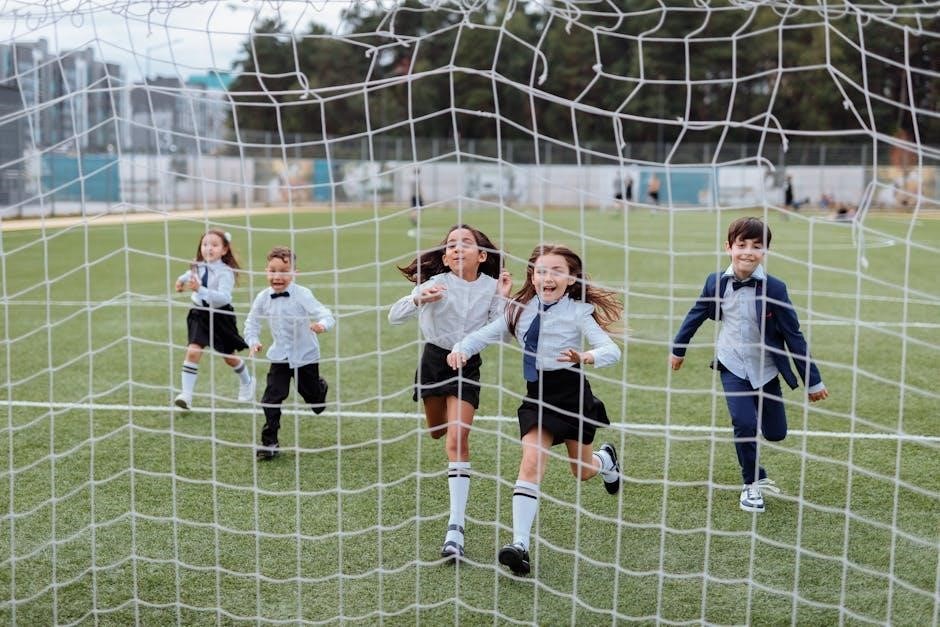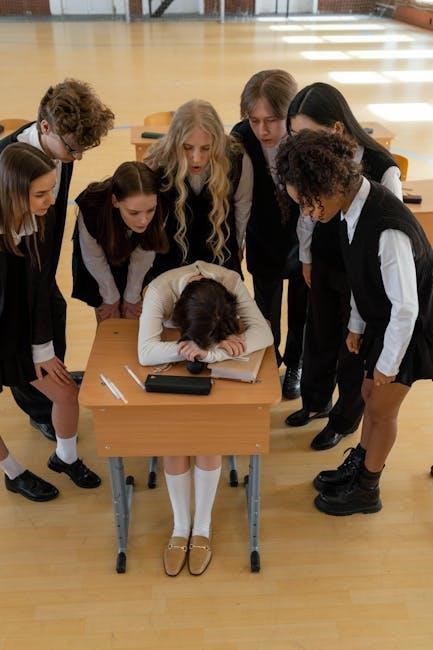
Schools need guidance on active shooter situations‚ hence is crucial for safety‚ with online resources available to help prepare personnel and students effectively always.
Importance of Preparation and Response
School personnel and community members must understand the importance of preparation and response in active shooter situations. Having a plan in place can help minimize the risk of harm and ensure a swift response. The Department of Homeland Security provides resources and exercise starter kits to help schools prepare for such events. These kits test emergency plans and strengthen response and recovery procedures through interactive exercises; Preparation is key to saving lives and reducing the impact of an active shooter incident. By being proactive and having a well-thought-out plan‚ schools can create a safer environment for students and staff. The goal is to be prepared‚ not scared‚ and to have the right procedures in place to respond effectively. This requires ongoing training‚ drills‚ and a commitment to safety and security. With the right preparation and response‚ schools can reduce the risk of an active shooter incident and keep their communities safe. Effective preparation and response can make all the difference in saving lives.

Understanding Active Shooter Situations
Active shooter situations involve violent attacks‚ requiring immediate response and action always from school personnel and students effectively.
History and Background of Active Shooter Incidents
The history of active shooter incidents in schools dates back to the 1990s‚ with the Columbine High School shooting being a pivotal moment in the national conversation about school safety. Since then‚ there have been numerous incidents of active shooters in schools‚ resulting in loss of life and injuries. The dynamics of these incidents have led to a reevaluation of police response practices and the development of in-school prevention initiatives. The educational community has placed considerable focus on having a plan in place to prevent and respond to active shooter situations. According to the Department of Homeland Security‚ active shooter incidents are often unpredictable and can happen anywhere‚ making it essential for schools to be prepared. By understanding the history and background of active shooter incidents‚ schools can better develop strategies to prevent and respond to these situations‚ ultimately creating a safer environment for students and staff.

Preparation and Planning for Active Shooter Situations
Schools must develop plans and conduct training to prepare for active shooter situations effectively always online.
Resources for School Personnel and Community Members
The Department of Homeland Security provides exercise starter kits to help schools prepare for active shooter situations‚ these kits include interactive exercises to test emergency plans and strengthen response and recovery procedures.
The Department of Education also offers readiness and emergency management resources for schools‚ including guides for developing high-quality emergency operations plans.
Additionally‚ the Cybersecurity and Infrastructure Security Agency offers a comprehensive set of resources on active shooter preparedness‚ including guides for identifying and mitigating potential threats.
The Federal Bureau of Investigation also provides resources on mass victimization and promising avenues for prevention‚ including tabletop exercises to help schools prepare for active shooter situations.
These resources can help school personnel and community members prepare for and respond to active shooter situations‚ and can be used in conjunction with other training and planning efforts to help keep schools safe.
Schools can also use online resources to learn more about active shooter preparedness and response‚ and to access training and planning tools.
Overall‚ there are many resources available to help schools prepare for and respond to active shooter situations.

Best Practices for Responding to Active Shooter Situations
Effective response plans involve training and drills for school personnel and students always.
Evacuation Procedures and Escape Routes
Schools should identify escape routes and designate assembly points for students and staff to gather in a safe location.
Maps of the school should be posted in each classroom and hallway‚ showing the escape routes and emergency exits.
Drills should be conducted regularly to practice evacuation procedures and ensure that everyone knows what to do in an active shooter situation.
It is also important to have a plan in place for students with disabilities‚ including evacuation routes and assembly points that are accessible to them.
Additionally‚ schools should consider conducting lockdown drills‚ where students and staff practice locking doors and hiding in a safe location.
By having a well-planned evacuation procedure and escape route‚ schools can help minimize the risk of injury or harm to students and staff in an active shooter situation.
School administrators should work with local law enforcement and emergency responders to develop and implement evacuation procedures and escape routes.

and Final Recommendations
Schools should prioritize the development and implementation of such a manual‚ taking into account the unique needs and circumstances of their community.
The manual should be regularly reviewed and updated to ensure that it remains effective and relevant.
Additionally‚ schools should provide training and resources to students and staff on active shooter situations‚ including evacuation procedures and emergency response plans.
By working together‚ schools can create a safer and more supportive environment for everyone.
Final recommendations include conducting regular drills and exercises‚ establishing clear communication protocols‚ and fostering a culture of preparedness and resilience.
Ultimately‚ the goal of an active shooter manual is to save lives and minimize harm‚ and by following these recommendations‚ schools can help achieve this critical objective.
By taking proactive steps‚ schools can help ensure the safety and well-being of their students and staff‚ and create a positive and supportive learning environment.